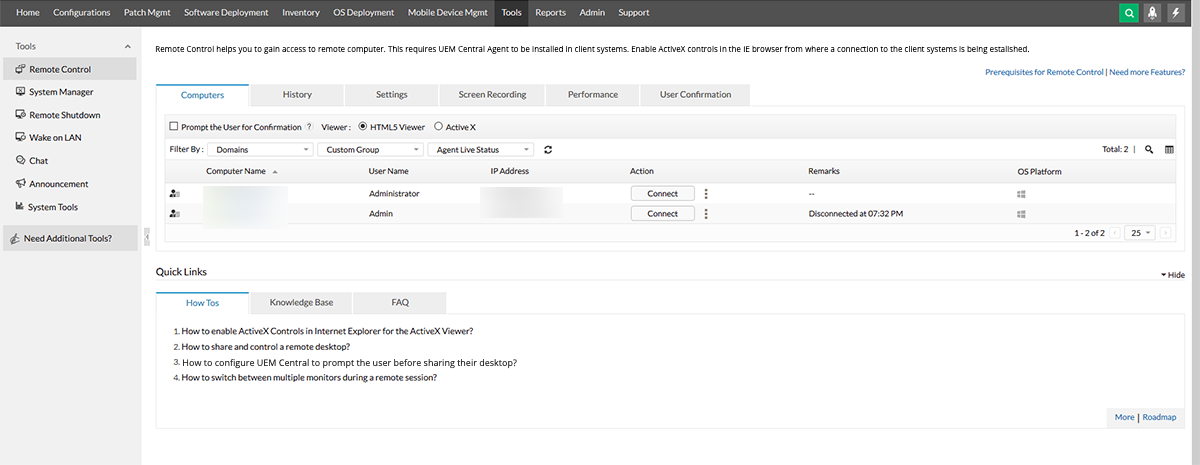| Information in this topic applies to desktop and web applications. |
- Desktop Zoom Settings Windows 10
- Zoom-windows-10-remote-desktop-connections-to-older-versions
- Install Zoom Windows 10 Desktop
- Remote Desktop Zoom Windows 10 App
In this video, author Brian Culp identifies the use of a new Windows 10 feature that can be helpful for Windows 10 Remote Desktop sessions when connecting to older computers. The feature is called Remote Desktop zoom support. Problem: Webcam or audio not working. Nothing is more frustrating than having your webcam. First published on CloudBlogs on Jun 29, 2015 NOTE: This is an old post. To learn about RDS in Windows Server 2016, please visit our documentation page Hello, my name is Ravi Ashok and I work on the Remote Desktop team. I am writing today about a new feature in the Remote Desktop (RD) client on Win.
By default the Microsoft Windows operating system includes the Remote Desktop component that allows you to connect to a remote computer and work with it as you work with your local computer.


Desktop Zoom Settings Windows 10
Using this component you can run and monitor automated tests on remote computers: you can connect to a test computer using a Remote Desktop connection and use the Remote Desktop window to work with the remote computer on your PC. For more information on running automated tests by using the Remote Desktop component, see About Running Tests via Remote Desktop.
While running GUI tests via the Remote Desktop component, keep in mind that the Remote Desktop window must be visible on screen. If you minimize the Remote Desktop window or disconnect from the Remote Desktop Connection session, the GUI tests will fail. To work around this problem, see the Running Tests in Minimized Remote Desktop Windows help topic.

However, sometimes, you may need to follow test running, so you may need to control the remote desktop. In this case, the screen resolution on the remote computer must be the same as on the master computer. Sometimes, it may be inconvenient. To work around this problem, you can specify the settings of the Remote Desktop connection, save them in an external .rdp file, and then use this file to start a Remote Desktop Connection session with the needed settings. Below is a step-by-step instruction on how to do this.
Zoom-windows-10-remote-desktop-connections-to-older-versions
Open Remote Desktop Connection. The way you do this depends on the operating system you use.
Expand the displayed dialog by clicking Show Options.
In the Connection settings group of settings, click Save As to create an .rdp file that will store the Remote Desktop Connection settings.
In the resulting Save As dialog, specify the desired name and path for the created file, and then click Save.
Close the Remote Desktop Connection window.
Open the created .rdp file in any editor of your choice, for example, in Notepad, and add the following string at the end of the file:
Make sure that the parameters desktopwidth:i:1280 and desktopheight:i:1024 match the server's desktop resolution. You can also change the color settings. For this purpose, replace the value session bpp:i:8 with the session bpp:i:24 string.
Double-click the .rdp file to start a Remote Desktop Connection session.
After that, you can resize the Remote Desktop window as you wish, at that, the window will show the entire remote desktop. So, you can make the Remote Desktop window smaller and you will be able to control your test remotely.
See Also


Install Zoom Windows 10 Desktop
Running Tests via Remote Desktop
About Running Tests via Remote Desktop
Running Tests in Minimized Remote Desktop Windows
Running Tests
Running Tests on Locked Computers
Remote Desktop Zoom Windows 10 App
So I saw that the RDP client includes a 'zoom' function which helps a bunch if you have a high DPI display, connecting to remote machines in window mode with a fixed resolution set. It effectively magnifies the entire session. This is good. However, I've noticed something odd. If the remote is 2012 server or newer, the zoom seems to only zoom about 80% of the screen. 2008R2 and prior seem to work exactly is intended.
Is this a bug? Or something related to it supposedly being able to adjust DPI and scale newer OSes better?
Anyone else run into it?
Thanks!

Comments are closed.